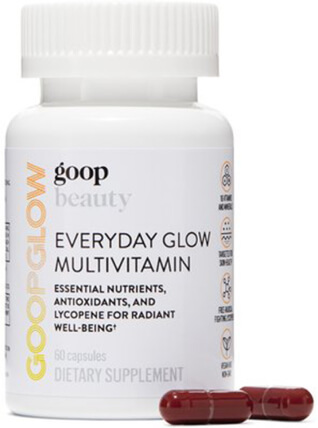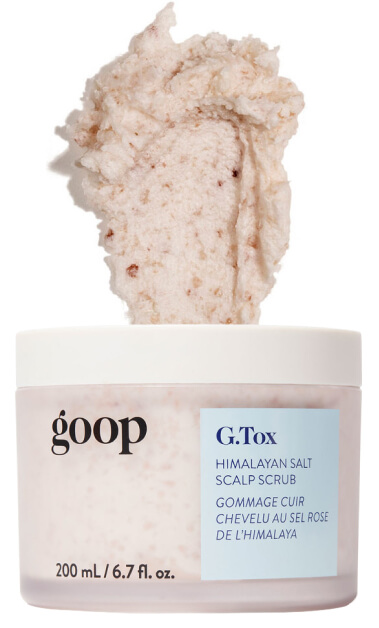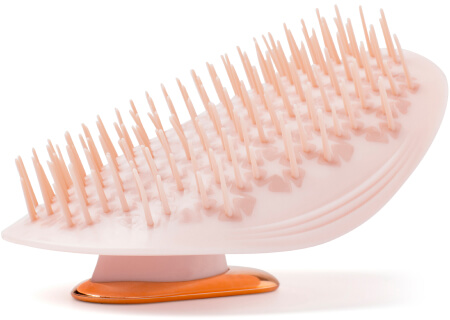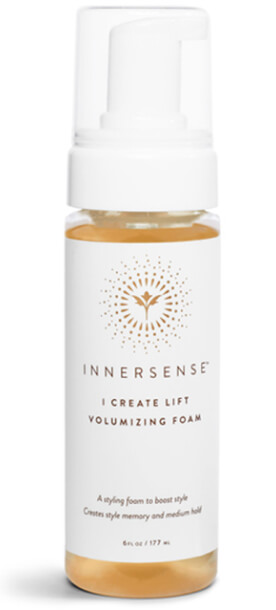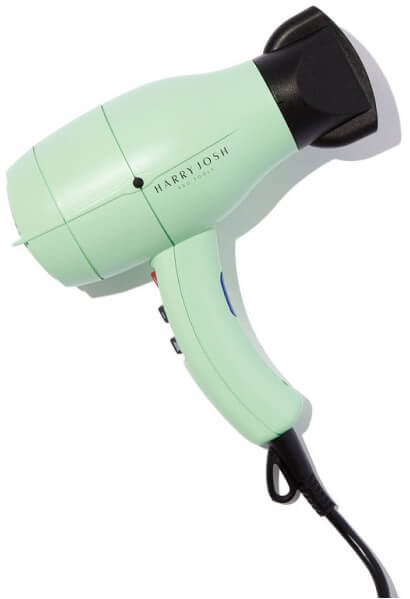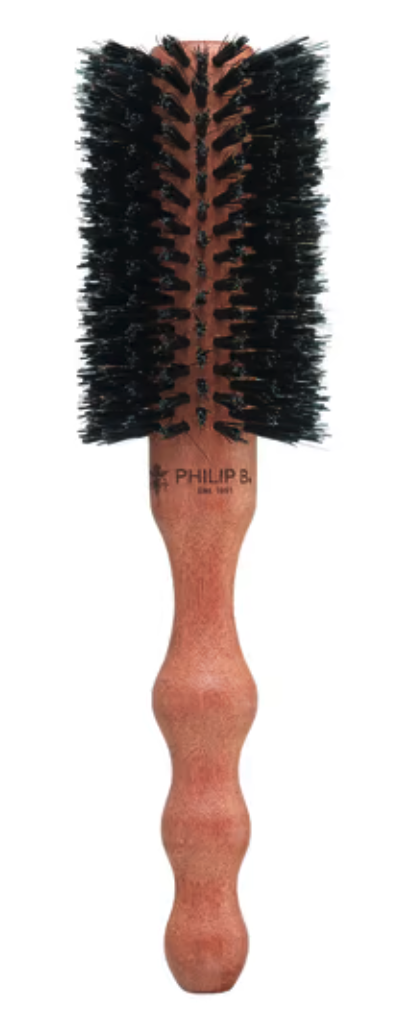
What Can (Really) Be Done
about Hair Loss?
Hair loss is much more common than you might think: Almost 50 percent of women suffer from hair loss at some point in their lives. The reasons range from hormones and genetics to easy-to-miss, surprisingly significant stressors in our lives. The science is still out on a lot of hair-loss solutions, says New York dermatologist and psychiatrist Amy Wechsler, MD. “There is some good research, though,” she says. “The best place to start is what’s causing the loss in the first place.”
CAUSES
“Many people have a genetic predisposition toward hair loss,” says Wechsler. “The method of inheritance is not nearly as clear in women as it is in men, but hair loss in general certainly runs in families. Unlike men, women tend not to lose the frontal hairline. Instead, their overall hair becomes thinner, as the hair follicles are miniaturized.”
Hormones factor in, too. “Estrogen has a positive effect on hair growth and can prolong the growth phase,” says Carlos Wesley, MD, a New York surgeon specializing in surgical and nonsurgical treatments for hair loss. “During pregnancy, when estrogen levels are high, women often have voluminous hair. Toward the end of the third trimester, estrogen levels drop, and levels of cortisol—the stress hormone—rise. The combination of these forces often leads to increased hair shedding in the months following pregnancy.” Women can also experience hair loss as they approach and go through menopause. “This is often a time when a genetic predisposition toward some hair loss can really kick in,” says Wechsler.
Plain old stress turns out to be a powerful factor in hair loss, too. “It can be physical, like anesthesia for a surgery, or psychological, like a death in the family, a personal scare about something, a divorce, or a breakup,” says Wechsler. “Hair follicles are sensitive to both physical and emotional stressors.” Hair loss can often show up three to six months after the stressor occurs, sometimes making it hard to pinpoint the cause. If it’s just a temporary period of stress, hair growth usually resumes within a couple of months.
Other reasons for hair loss include nutrition, particularly an iron deficiency; an over- or underactive thyroid gland; and illnesses such as cancer and autoimmune diseases. So it’s really important to check in with your doctor if you’re experiencing hair loss.
TREATMENT OPTIONS
WHICH SUPPLEMENTS AND TOPICAL TREATMENTS REALLY WORK?
“Minoxidil, which is the active chemical in Rogaine, is helpful,” says Wechsler. “For years, we were telling women to get the men’s 5 percent because it works so much better than the 2.5 percent originally made for women.” There is now a 5 percent version for women. Some doctors, like Wesley, compound even stronger formulas for patients. “Our topical spray for women includes minoxidil; retinol for better delivery; melatonin, which topically has been shown to increase hair in the crown for women; and spironolactone—a medication used to treat acne and unwanted facial hair—which shields the hair follicles from androgens, the hormones that cause thinning,” he says. Wesley advises patients to spray these custom blends on five to seven times every night and prepare to wait for three months before seeing the first signs and a full six months before any real benefits.
Another topical strategy comes from Harklinikken, a Danish hair clinic that’s been studying women’s hair loss for over 25 years. A consultation, either in person (there are locations in New York, Beverly Hills, and Tampa) or through a virtual session, determines whether you’re a candidate, meaning that you’ve got the potential to see at least a 30 percent improvement in hair growth. If you are a candidate, the company formulates a custom extract just for you, which you then apply daily. “Some of the key ingredients are burdock root, marigold, and proprietary constituents from cow’s milk,” says founder and lead researcher Lars Skjoth. “It’s about making the concentration so high and getting those ingredients into a completely natural fatty acid bubble tiny enough to enter your follicle.”
-
Wechsler likes to include biotin in her formulations. “It’s usually not amazing in terms of results, but it can be useful, especially in combination with other hair treatments,” she says. Additionally, Wesley recommends taking an iron supplement with vitamin C (the latter helps improve iron absorption) to improve overall hair volume. Gerda Endemann, goop’s senior director of science and research, seconds the iron, along with zinc: “Hair cells are some of the fastest-dividing cells in the body, so optimal nutrition is key,” she says. “Zinc, which is essential for the formation of hair follicles, and iron seem to be two of the most important nutrients for healthy hair.” Accordingly, the new GOOPGLOW multivitamin includes 100 percent of your Daily Value for iron and vitamin C and 67 percent of your Daily Value for zinc.
-
goop Beauty
GOOPGLOW Everyday Glow Multivitamin
goop, $60/$55
with subscriptionSHOP NOW
HOW MUCH SHOULD WE WASH OUR HAIR?
Wesley says this is the question he gets most. “While there is no magical number of hair washes per week, it has been shown that cortisol and dihydrotestosterone—two hormones that can accelerate hair thinning—can be present in scalp sebum, which is our natural scalp oil,” he says. “So I recommend washing the scalp at least three times a week. It doesn’t necessarily have to be washed with shampoo, though—in some cases, you can simply wash the scalp with water.”
Scalp massage, done while shampooing or when your hair is dry, can help increase circulation, but its hair-preserving capabilities have not yet been proven. “The thing I love about massage is that it temporarily decreases cortisol levels,” says Wechsler. “But if someone really thinks massaging the scalp for 5 to 10 minutes a day is going to help grow their hair back…I don’t think that’s going to happen.”
CAN STYLING MAKE A DIFFERENCE?
-
“The only hairstyle that can cause real hair loss is very tight braiding,” says Wechsler. “It’s called traction alopecia. Anything else you do to the surface of the hair follicle can make the hair break but not fall out.” Hair that’s been broken off certainly doesn’t contribute to hair fullness, however, so avoid tight ponytails, overprocessing (chemical hair straighteners can do a number on your hair, particularly combined with hair coloring), and overstyling, particularly with heat. Hair brushing should be done gently. A new, flexible palm-size brush from Manta molds to the shape of your hand and scalp, creating less tension, while its bendy, forgiving bristles minimize snagged hairs (Manta’s founder, Tim Binnington, a British hairdresser, created it for his wife when she was growing her hair back after an illness and worried brushing was causing breakage).
-
Manta
Manta Pink Hairbrush
goop, $30SHOP NOW
On the other hand, some styling can make a difference in the appearance of thinning hair. “Product, product, product—and a powerful dryer,” says Harry Josh, New York hairstylist, colorist, and founder of Harry Josh Pro Tools. “The right product depends on you and your hair, but it should feel weightless, with the ability to build texture and soft hold. Once you’ve got the product—I love mousse—in your hair, use a round brush and start drying right at the roots. Pull up with the brush and hit the roots with the dryer to build the lift you need to create volume.”
WHAT ARE THE IN-OFFICE OPTIONS?
Procedures like platelet-rich plasma treatments to the scalp—similar to the ones used for rejuvenating the skin—help stimulate growth factors in the scalp. Doctors like Wesley and Robin Unger, MD, in New York use this technique as therapy for hair loss. They prepare plasma—containing platelets—from a patient’s own blood, concentrate it, and inject it directly into the skin of their scalp. Clinical results show a significant increase in hair density, thickness, and growth after three to six months.
Advancing research shows growing potential for stem-cell-derived therapy to help with hair growth. Doctors and hair-restoration experts like Craig Ziering, DO, specialize in this technique that uses bioactive molecules—growth factors, exosomes, cytokines, chemokines, and others—from stem cells to regulate the hair follicle cycle and regenerate hair growth. The molecules are injected directly into the scalp or applied topically.
Transplants, Wesley says, have come a long way. He now starts by moving hair from one area (generally from the back of the head, which is typically less affected by hormone changes) to another area. “It works because we take more than just the hair shaft—we take the full anatomy of the hair follicle, which allows these newly placed hairs to continue to grow in a healthy manner.” There’s an art to the placement, too: “When coarse follicles are placed in the front, the spacing is too far apart, or the surgical design is too linear, it doesn’t make aesthetic sense,” says Wesley. “These are telltale signs of a ‘pluggy’ transplant. Ensuring the survival rate of the finest hairs at the optimal density leads to healthy facial framing.”
Related Reading
The Key Vitamins and Minerals for Healthy Hair Growth
This article is for informational purposes only. It is not, nor is it intended to be, a substitute for professional medical advice, diagnosis, or treatment and should never be relied upon for specific medical advice. To the extent that this article features the advice of physicians or medical practitioners, the views expressed are the views of the cited expert and do not necessarily represent the views of goop.


